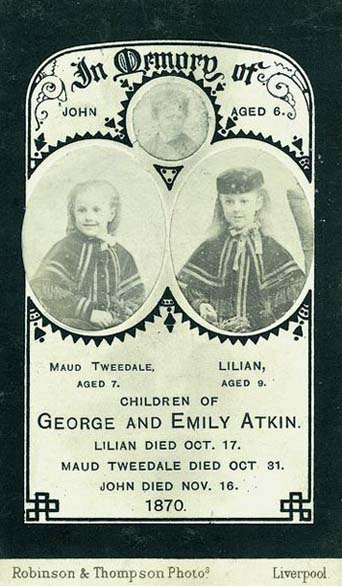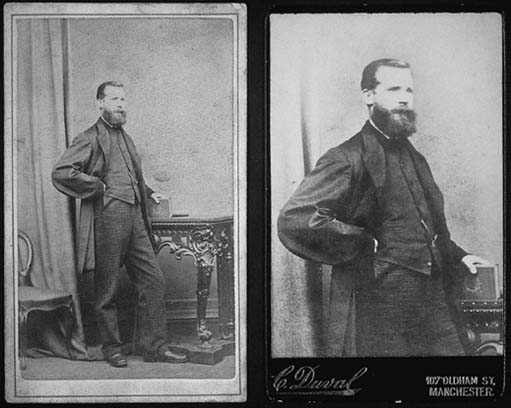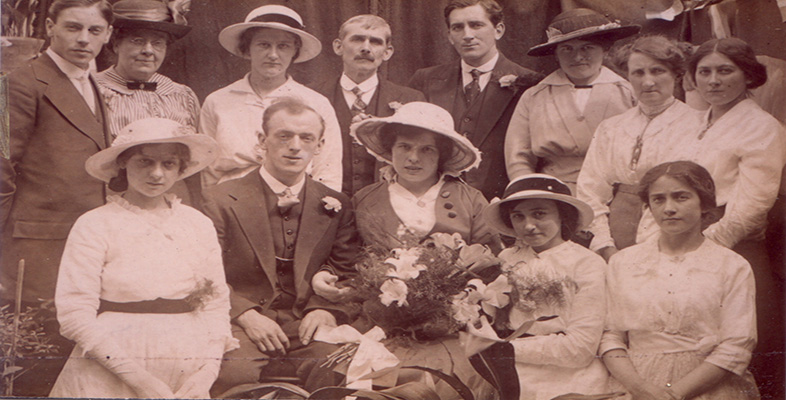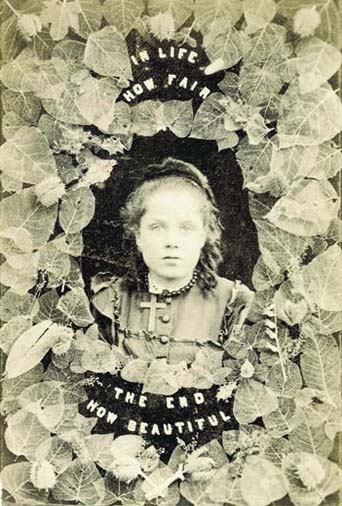5.7 Rites of passage (continued)
Death
The final rite of passage, death itself, permeates the Victorian family album. Throughout the 19th century it was common practice, following the death of a relative, to commission memorial photographs. The overwhelming majority of these memorial photographs feature the person as living, not dead.

The memorial photograph assumed a wide variety of different guises depending on the needs and circumstances of the grieving relatives. They could vary from simple cartes de visite, like Images 70 and 71, to framed enlargements on opal glass. Identification of the memorial nature of a portrait is easy when it was issued on special mourning cards complete with black banding at the edges and suitable phrases such as ‘In memory of’, ‘Affectionate remembrance’ and so on. However, that was not always the case.

Can you see the connection between these 2 portraits, which came from the same album?
The three-quarter length portrait on the right has clearly been copied from the earlier, full-length portrait. The earlier print dates to the 1860s/70s, the later print to the 1890s. We know the copy print was not taken from the original negative because it isn't sharp. Although it carries no obvious identification, the copy print is probably a memorial photograph, produced after the man had died, for distribution to members of his family. When looking through your own albums, be alert for examples like this.

